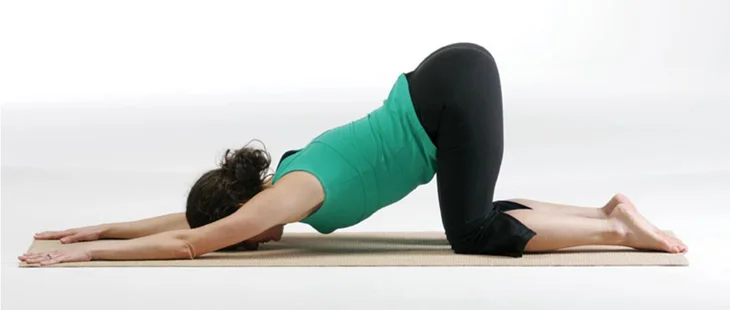Yoga, an ancient practice rooted in over 5,000 years of Indian tradition, is not only a beneficial tool for enhancing mental wellness but also an effective method for improving physical flexibility and mobility. Among the various focal points in the body that yoga targets, the shoulders stand out as a critical area. Tight shoulders can significantly affect posture, mobility, and even the ability to perform everyday tasks. This is where shoulder-opening yoga poses come into play. These poses are specifically designed to release tension and tightness, providing a path to increased flexibility and improved range of motion.
In this blog, we will explore 10 yoga poses that are exceptionally effective for opening up the shoulders, offering a gateway to a more flexible, healthier you. Whether you’re an experienced yogi or a beginner, incorporating these poses into your routine can lead to profound benefits for your shoulder mobility and overall well-being.
Importance of Shoulder Opening in Yoga:
In the practice of yoga, opening the shoulders is paramount for a multitude of reasons. It not only enhances flexibility and range of motion but also plays a critical part in achieving overall well-being and balance in one’s practice. By focusing on shoulder mobility, yogis can delve deeper into their practice, execute poses with greater precision, and minimize the risk of injury.
Benefits of Shoulder Flexibility in Yoga:
Increased shoulder flexibility in yoga offers substantial benefits. For starters, it aids in the release of tension and tightness in the upper body, promoting relaxation and stress relief. Flexible shoulders allow for a deeper and more effective engagement in poses, enhancing the benefits of your yoga practice. Moreover, improved shoulder mobility contributes to better posture and alignment, both during yoga sessions and in everyday life.
The Connection Between Shoulder Mobility and Overall Health:
The correlation between shoulder mobility and overall health cannot be overstated. Shoulders that are open and flexible facilitate improved breathing patterns, as the chest can expand more fully. This, in turn, increases oxygen intake, boosting energy levels and enhancing mental clarity. Furthermore, maintaining healthy shoulder joints can prevent common ailments associated with sedentary lifestyles or aging, such as frozen shoulder or rotator cuff injuries. Thus, incorporating shoulder-opening poses into your yoga routine is advantageous not only for your physical yoga practice but for your general health as well.
Top 10 Shoulder Opening Yoga Poses

The following ten yoga poses are instrumental in opening and stretching the shoulder muscles. Incorporating these poses into your practice can lead to greater shoulder flexibility and mobility.
- Downward Facing Dog
Downward Facing Dog is a fundamental yoga pose that excellently stretches the shoulders, along with the hamstrings, hands, and calves. By pressing the floor away while reaching the hips upwards and backward, one can feel a substantial stretch in the shoulders, promoting flexibility over time.
- Puppy Pose
Puppy Pose is a gentle yet effective shoulder opener that also stretches the spine. By keeping the hips over the knees and walking the hands forward to lower the chest towards the ground, the shoulders receive a deep stretch, encouraging them to open up.
- Thread the Needle
Thread the Needle pose offers a unique stretch by targeting one shoulder at a time. From a four-legged position, one arm threads underneath the body with the palm facing up, stretching the shoulders, arms, and upper back. This pose not only opens the shoulder but also aids in releasing tension in the upper back.
- Eagle Arms
Eagle Arms, extracted from the full Eagle Pose, can be executed while seated or standing. By wrapping the forearms together and lifting the elbows, this pose stretches the shoulders and upper back, enhancing mobility in these areas.
- Cow Face Pose
Cow Face Pose involves the stacking of knees while sitting and reaching both arms behind one’s back with one arm coming over the shoulder and the other from below to clasp hands or hold a yoga strap. This intense stretch opens both the shoulders and chest, contributing to improved flexibility.
- Supported Shoulder Stand
The Supported Shoulder Stand is an inversion that not only promotes blood circulation but also deeply stretches the shoulders and neck. Performed with the support of the hands on the lower back, this pose encourages the shoulders to open while also strengthening them.
- Reverse Prayer Pose
Reverse Prayer Pose involves bringing the hands together in a prayer position behind the back. This pose requires and promotes flexibility in the shoulders and forearms, offering a profound stretch.
- Melting Heart Pose
Melting Heart Pose is another very effective shoulder opener that also targets the thoracic spine. From a kneeling position, the chest is lowered towards the ground by stretching the arms forward, creating a deep stretch in the shoulders and chest.
- Gomukhasana
Gomukhasana, or Cow Face Pose, involves a unique arm position where the hands meet behind the back—one reaching down from the shoulder and another reaching up from the waist. This pose deeply stretches the shoulders, triceps, and chest, significantly improving shoulder flexibility.
- Dolphin Pose
Dolphin Pose is similar to Downward Facing Dog but with the forearms on the ground, offering an intense stretch to the shoulders and upper back. This pose also strengthens the arms and core, promoting overall stability and mobility in the upper body.
Incorporating these shoulder-opening yoga poses into your practice regularly can significantly enhance your shoulder flexibility, improving your overall yoga practice and contributing to better health and well-being. Remember to approach each pose with patience and to respect your body’s limits, gradually building up flexibility and strength over time.
Precautions and Tips for Practicing Shoulder Opening Yoga Poses:
Engaging in shoulder-opening yoga poses can significantly increase flexibility and mobility, promoting a sense of release and openness. However, as with any form of physical activity, practicing these poses requires an awareness of the body’s limitations and the implementation of proper precautions to ensure a safe and effective workout. Below are essential tips and strategies to maximize the benefits of your yoga practice while minimizing the risk of injury.
Proper Alignment and Modifications for Beginners:
One of the key elements to safely practicing shoulder-opening yoga poses is maintaining proper alignment. Each pose should be performed with attention to the positioning of the shoulders, neck, and spine to prevent strain and promote the most effective stretch. Beginners, in particular, may find some poses challenging and should not hesitate to use modifications. Props such as yoga blocks, straps, and bolsters can be invaluable tools to assist in achieving the correct form without overextending. For instance, in poses that require reaching the hands to the floor, using a block can bring the floor closer to you, reducing strain.
It’s also advisable for beginners to start slowly, gradually increasing the intensity and complexity of poses as their flexibility and strength improve. Listening to your body is crucial; if a pose causes pain beyond mild discomfort, you should stop and consult a professional about proper form and possible alternatives.
Breathing Techniques to Enhance Shoulder Opening:
Breathing plays a pivotal role in yoga, not only as a meditative tool but also in enhancing the effectiveness of the poses. Deep, controlled breathing can help to relax the muscles, allowing for a deeper stretch and opening of the shoulders. When practicing shoulder-opening poses, focus on inhaling deeply to expand the chest and shoulders, and exhale slowly to deepen into the stretch. This conscious breathing helps to release tension and tightness, facilitating a greater range of motion over time.
Additionally, incorporating techniques such as the Ujjayi breath (a form of yogic deep breathing that sounds like the ocean) can further aid in concentrating the mind and maintaining a rhythm that supports the movements and transitions between poses.
Warm-Up Exercises to Prepare The Shoulders:
Before delving into more intensive shoulder-opening poses, it’s essential to prepare the body with warm-up exercises. These preliminary movements help to increase blood flow to the shoulder muscles, reducing the risk of injury. Examples of effective warm-up exercises include:
- Arm circles: Start by circling your arms slowly in both directions, gradually increasing the size of the circles.
- Shoulder rolls: Gently roll your shoulders forward and backward, focusing on relaxing the trapezius muscles.
- Cat-Cow stretches: This gentle flow between arching and rounding the back helps to loosen the spine and shoulder blades.
Incorporating these warm-up exercises into your yoga routine ensures that the shoulders are properly prepared for more advanced stretches, leading to a more fruitful and safe practice. By following these precautions and tips, practitioners can explore shoulder-opening poses with confidence, paving the way for improved flexibility and a deeper, more rewarding yoga experience.
Incorporating Shoulder Opening Poses into Your Yoga Routine:

Incorporating shoulder-opening poses into your yoga routine can significantly enhance your shoulder flexibility, reduce tightness, and improve your overall mobility. When structuring a yoga practice focusing on the shoulders, it’s essential to understand how to sequence these poses effectively and determine the optimal frequency and duration for your practice.
Creating a Sequence for Shoulder Opening:
Creating an effective sequence involves starting with gentle warm-up poses to prepare the body, gradually moving into more targeted shoulder-opening poses, and finishing with cooling down stretches to relax the muscles. Begin your practice with mild stretches such as Cat-Cow and Downward Facing Dog to warm up the body. Progress to more intense shoulder openers like Cow Face Pose, Eagle Arms, and Puppy Pose. Integrate movements that work on different aspects of shoulder flexibility and mobility. Lastly, conclude with gentle stretches like Child’s Pose to allow your muscles to relax and recover. The key is to maintain a balance between effort and ease, encouraging your shoulders to open without straining them.
Frequency and Duration of Practicing Shoulder Opening Poses:
The frequency and duration of your practice play a pivotal role in seeing improvements in shoulder flexibility. Ideally, incorporate shoulder-opening poses into your yoga routine 3-4 times a week. This regular engagement allows the muscles to gradually adapt and elongate. Each practice session should last at least 20 to 30 minutes, dedicating sufficient time to each pose to enable the muscles to stretch properly and reap the benefits. However, listen to your body and adjust the intensity and duration of your practice as needed. If you experience any discomfort, it might be a signal to modify the pose or reduce the frequency of your practice.
By integrating shoulder-opening poses into your yoga routine thoughtfully through effective sequencing and adhering to a consistent practice schedule, you can enhance your shoulder flexibility, alleviate tightness, and improve your overall well-being.

